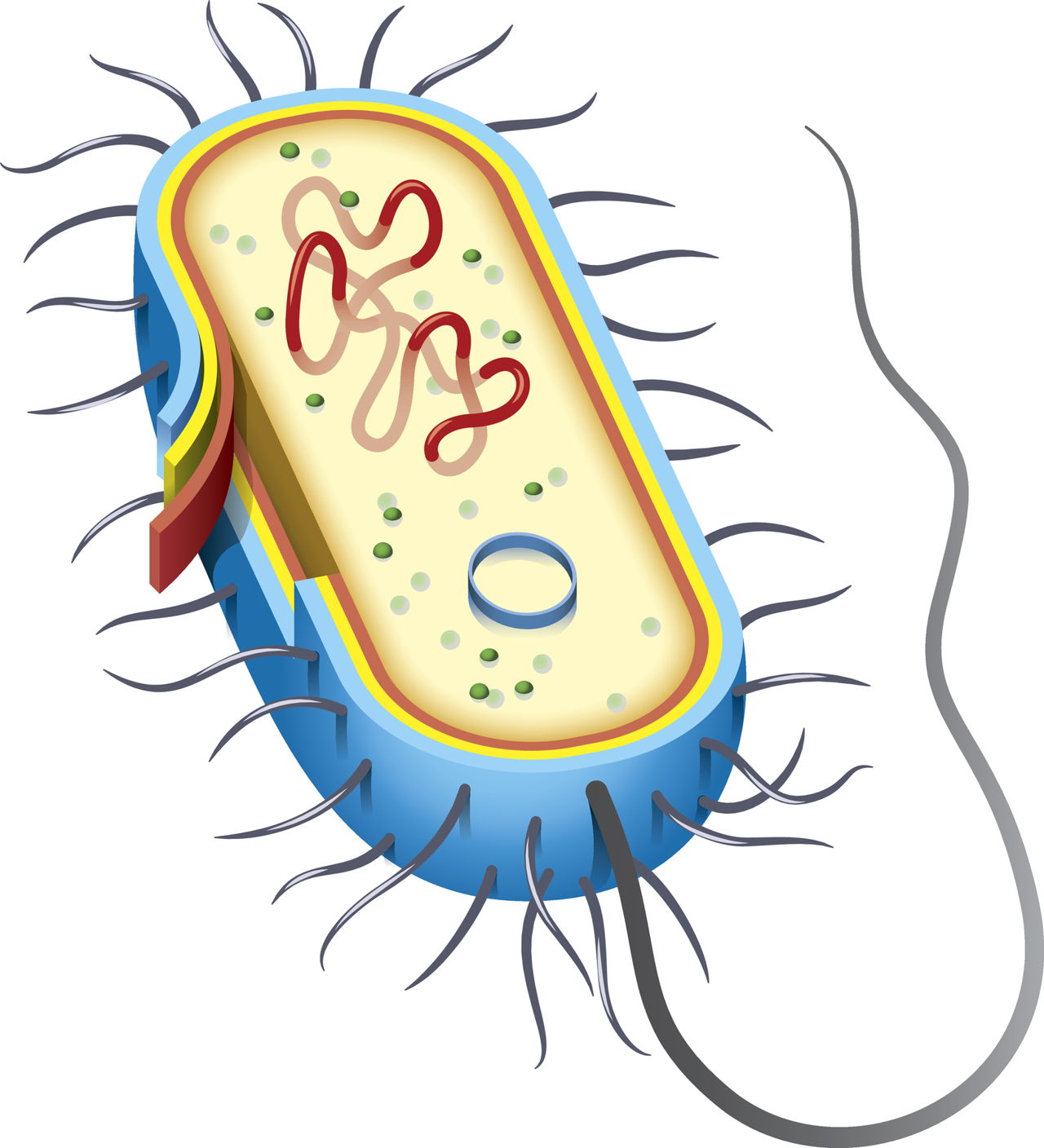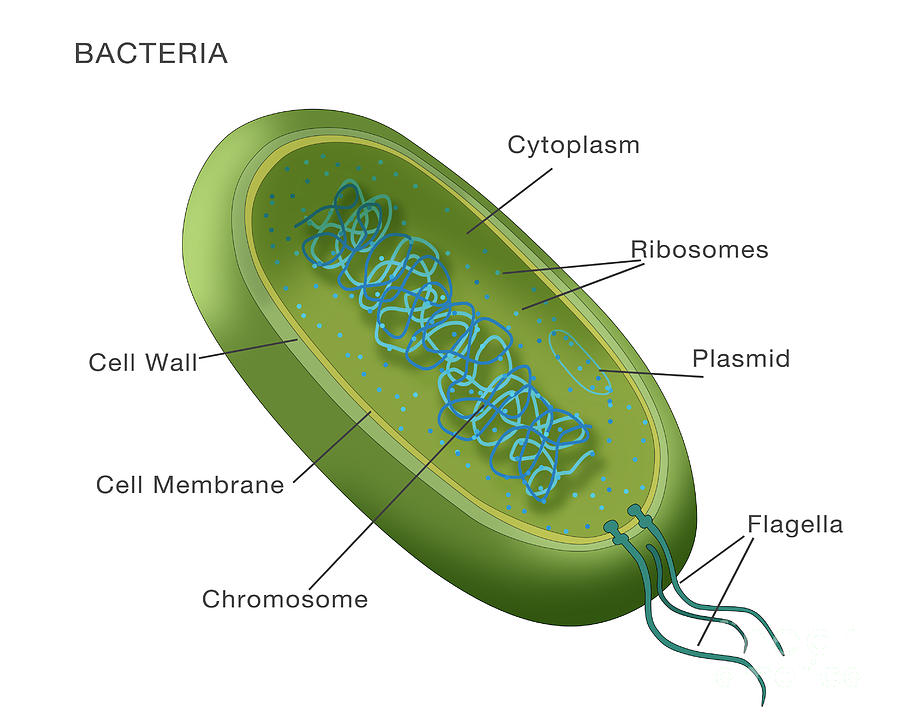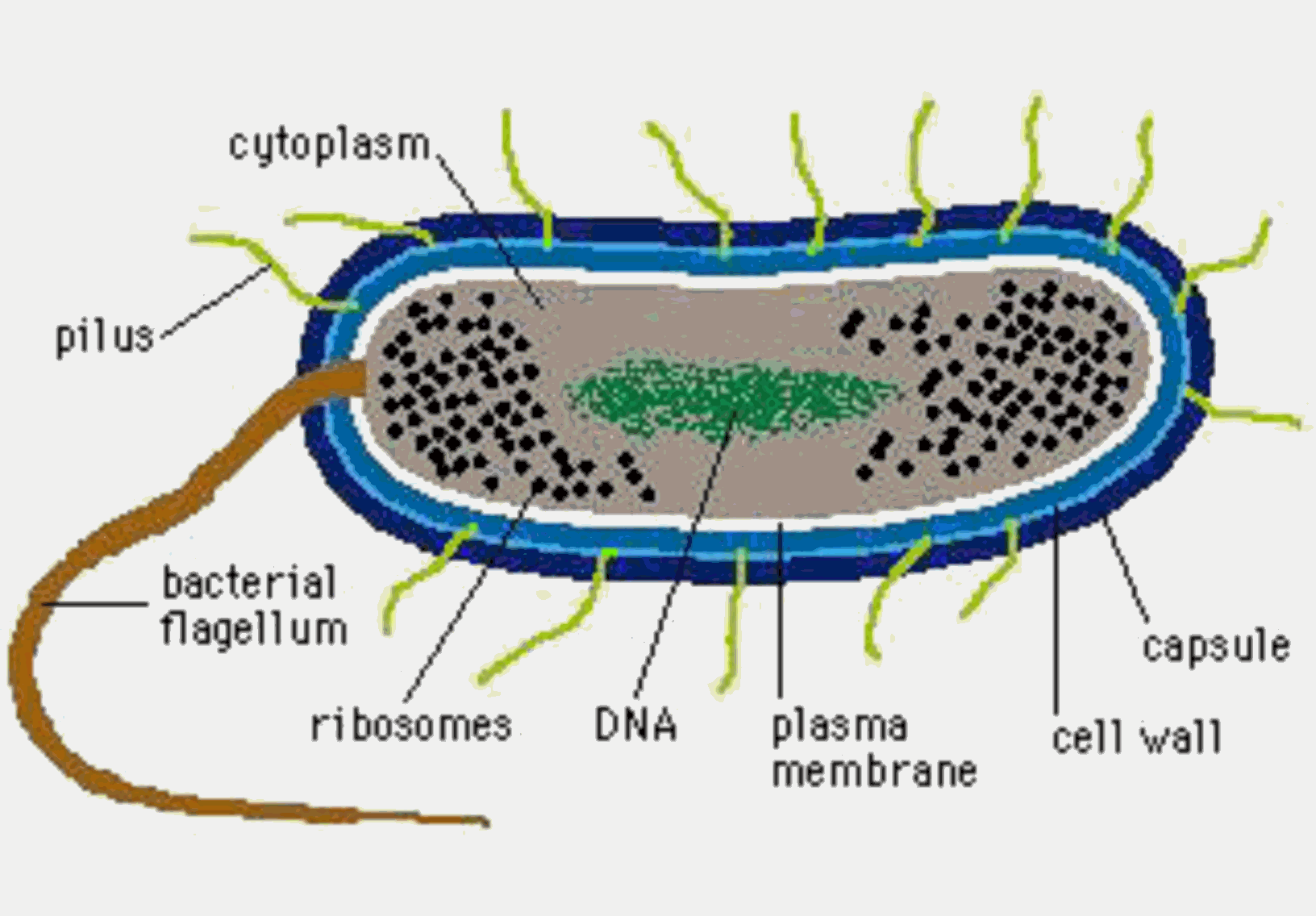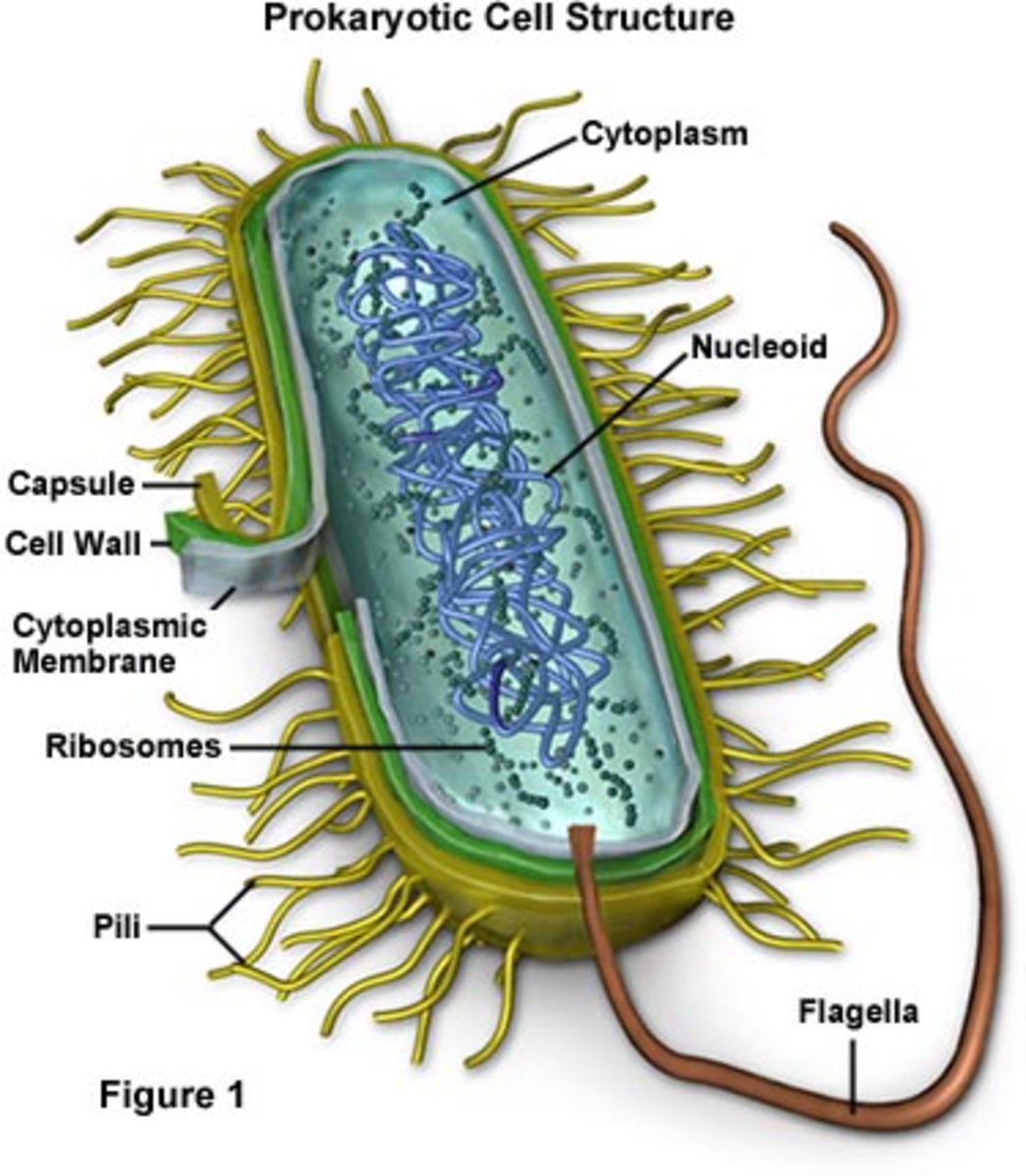
30 Label A Bacterial Cell
Cell size. Typical prokaryotic cells range from 0.1 to 5.0 micrometers (μm) in diameter and are significantly smaller than eukaryotic cells, which usually have diameters ranging from 10 to 100 μm. The figure below shows the sizes of prokaryotic, bacterial, and eukaryotic, plant and animal, cells as well as other molecules and organisms on a.

Pin by Magpie on ชีวะ Prokaryotic cell, Eukaryotic cell, Prokaryotic cell model
Bacterial cell have simpler internal structure. It lacks all membrane bound cell organelles such as mitochondria, lysosome, golgi, endoplasmic reticulum, chloroplast, peroxisome, glyoxysome, and true vacuole. Bacteria also lacks true membrane bound nucleus and nucleolus. The bacterial nucleus is known as nucleoid.

Natural Science 1 & 2, BiologyGeology 3 BACTERIAL CELL
Cell wall The structure of peptidoglycan. The cell envelope is composed of the cell membrane and the cell wall.As in other organisms, the bacterial cell wall provides structural integrity to the cell. In prokaryotes, the primary function of the cell wall is to protect the cell from internal turgor pressure caused by the much higher concentrations of proteins, and other molecules inside the.

Learn About Prokaryotic Cells, Prokaryotes Bacteria and Archaeans Prokaryotic cell
Bacterial cells were once presumed to be 'bags of enzymes' with minimal oganization 1. Yet, in the past 10 years, numerous studies have demonstrated that bacteria compartmentalize many.

Cellular Structure of Bacteria ZeroInfections
1.11: Prokaryotic Cells. Distinguish between prokaryotic cells and eukaryotic cells in terms of structure, size, and the types of organisms that have these cell types. Identify structures of bacterial cells in models and diagrams, including details of Gram-positive and Gram-negative cell walls and flagella.

Bacteria Diagram Photograph by Monica Schroeder
3.3 Bacterial Plasma Membranes. Describe the fluid mosaic model of membrane structure and identify the types of lipids typically found in bacterial membranes. Distinguish macroelements (macronutrients) from micronutrients (trace elements) and provide examples of each. Provide examples of growth factors needed by some microorganisms.

Bacterial Cell Structure and Function
A fundamental method in molecular biology and microbiology is labeling bacterial cells. Keeping track of and identifying particular bacterial strains, running research, and comprehending bacterial behaviour all depend on it. Here is your comprehensive guide to labeling bacteria cells, with all the information you require: Why Bacterial Cells Are Labeled Monitoring and Recognition: Labels make.

Types Of Bacterial Cells
Prokaryotic cell (bacterial cell) Size: Most are 5 μm - 100 μm: Most are 0.2 μm - 2.0 μm: Outer layers of cell: Cell membrane. Surrounded by cell wall in plants and fungi.

Cell Structure & Function Notes Mr. Stewart's Biology Class
Bacterial cells have simpler internal structures like Pilus (plural Pili), Cytoplasm, Ribosomes, Capsule, Cell Wall, Plasma membrane, Plasmid, Nucleoid, Flagellum, etc. Labeled Bacteria diagram. Eukaryotes have been shown to be more recently evolved than prokaryotic microorganisms. Eukaryotic cells, which make up higher organisms, evolved from.

prokaryotic cell bacteria parts
Bacteria cells are the smallest living cells that are known; even though viruses are smaller than bacteria, viruses are not living cells. In microbiology there are different types of bacteria with various sizes, shapes, and structures. The bacteria shapes, structure, and labeled diagrams are discussed below.

Bacterial Intracellular Structures That Give Bacteria/Prokaryotes an Advanatage! HubPages
The structure of bacteria is known for its simple body design. Bacteria are single-celled microorganisms with the absence of the nucleus and other c ell organelles; hence, they are classified as prokaryotic organisms. They are also very versatile organisms, surviving in extremely inhospitable conditions. Such organisms are called extremophiles.

Bacterial cell anatomy in flat style. Vector modern illustration. Labeling structures on a
3.1 Cell Culture and Labeling. Depending on the goal of experiments, one can label bacteria with FDAA with a long-pulse, short-pulse, or pulse-chase. In long-pulse labeling, incubate dyes with cell cultures for 1-3 cell cycle durations so that the whole bacterial outline can be visualized; for short-pulse labeling, incubate dyes with cells for 5-10% of the cell cycle so that nascent PG.

Structure and Function of Prokaryotic Cells
Figure 1. Cutaway drawing of a typical bacterial cell illustrating structural components. See Table 2 below for chemical composition and function of the labeled components. Table 2. Summary of characteristics of typical bacterial cell structures. Structure. Flagella. Function (s) Swimming movement.

Bacteria Cell Vector Art, Icons, and Graphics for Free Download
All bacteria, both pathogenic and saprophytic, are unicellular organisms that reproduce by binary fission. Most bacteria are capable of independent metabolic existence and growth, but species of Chlamydia and Rickettsia are obligately intracellular organisms. Bacterial cells are extremely small and are most conveniently measured in microns (10-6 m). They range in size from large cells such as.

Bacterial Cell Structure and Function
In gram-negative bacteria, the cell wall is thin and releases the dye readily when washed with an alcohol or acetone solution. Cytoplasm - The cytoplasm, or protoplasm, of bacterial cells is where the functions for cell growth, metabolism, and replication are carried out. It is a gel-like matrix composed of water, enzymes, nutrients, wastes.

Bacteria Structure Over 15,693 RoyaltyFree Licensable Stock Vectors & Vector Art Shutterstock
Cell wall: It is a tough and rigid structure of peptidoglycan with accessory specific materials (e.g. LPS, teichoic acid etc.) surrounding the bacterium like a shell and lies external to the cytoplasmic membrane. It is 10-25 nm in thickness. It gives shape to the cell. Nucleus: The single circular double-stranded chromosome is the bacterial genome.